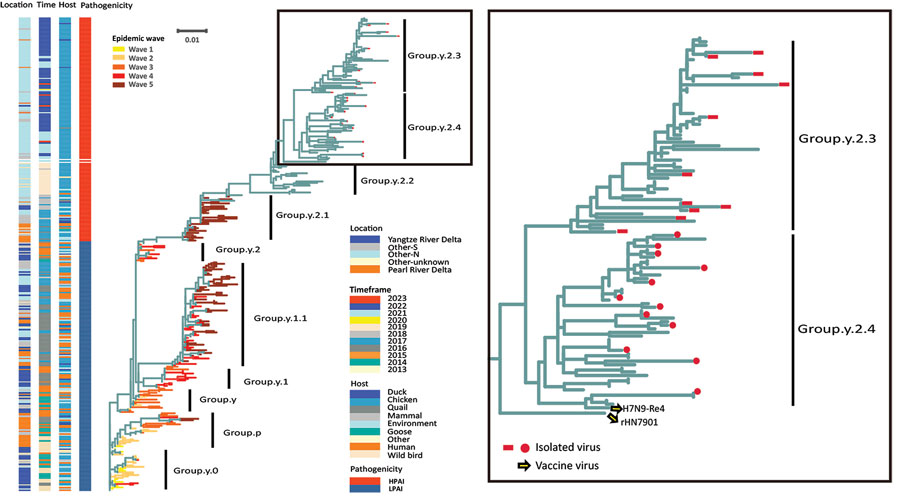Volume 30, Number 6—June 2024
Dispatch
Evolution and Antigenic Differentiation of Avian Influenza A(H7N9) Virus, China
Figure 1

Figure 1. Phylogenetic analysis of evolution and antigenic differentiation of avian influenza A(H7N9) virus, China. Colors in columns at left show locations, timeframes, hosts, and pathogenicity of virus strains. The maximum-likelihood phylogenetic tree of the hemagglutinin gene depicts viruses corresponding to epidemic waves 1–5. Tree on right shows detail of Group.y.2.3 (red rectangles) and Group.y.2.4.4 (red circles) in comparison with vaccine strains. Scale bar indicates nucleotide substitutions per site. LPAI, low-pathogenicity avian influenza; HPAI, highly pathogenic avian influenza; Other-N, sites in the northern region; Other-S, sites in the southern region.
1These first authors contributed equally to this article.
Page created: April 03, 2024
Page updated: May 22, 2024
Page reviewed: May 22, 2024
The conclusions, findings, and opinions expressed by authors contributing to this journal do not necessarily reflect the official position of the U.S. Department of Health and Human Services, the Public Health Service, the Centers for Disease Control and Prevention, or the authors' affiliated institutions. Use of trade names is for identification only and does not imply endorsement by any of the groups named above.